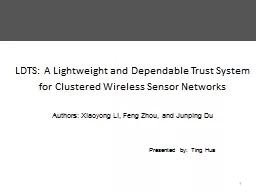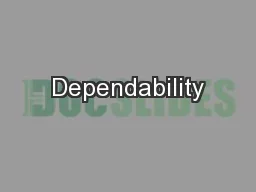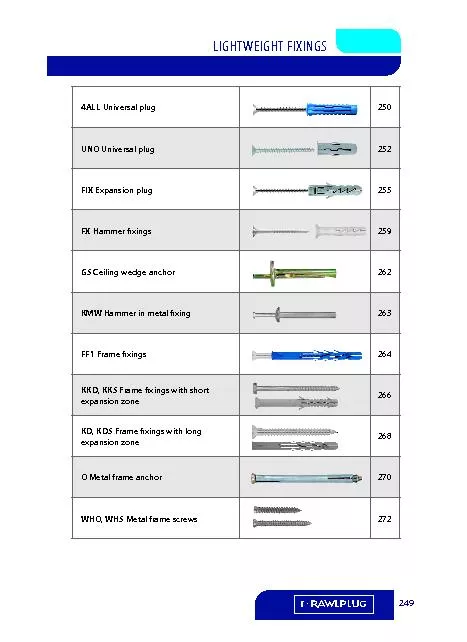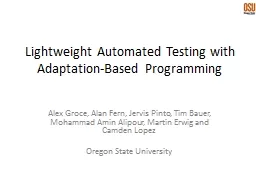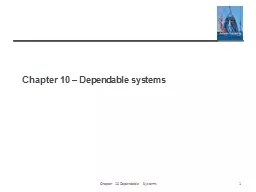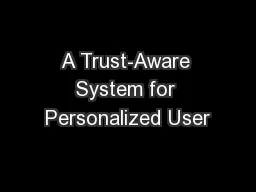PPT-LDTS: A Lightweight and Dependable Trust System
Author : marina-yarberry | Published Date : 2015-10-23
for Clustered Wireless Sensor Networks 1 Presented by Ting Hua Author s Xiaoyong Li Feng Zhou and Junping Du Outline 2 Motivation C lustered WSN M odel Lightweight
Presentation Embed Code
Download Presentation
Download Presentation The PPT/PDF document "LDTS: A Lightweight and Dependable Trust..." is the property of its rightful owner. Permission is granted to download and print the materials on this website for personal, non-commercial use only, and to display it on your personal computer provided you do not modify the materials and that you retain all copyright notices contained in the materials. By downloading content from our website, you accept the terms of this agreement.
LDTS: A Lightweight and Dependable Trust System: Transcript
Download Rules Of Document
"LDTS: A Lightweight and Dependable Trust System"The content belongs to its owner. You may download and print it for personal use, without modification, and keep all copyright notices. By downloading, you agree to these terms.
Related Documents

